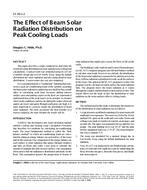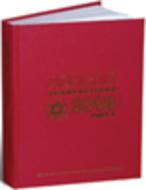The energy performance of a building is, apart frominstalled systems and building usage, primarily determined by the thermalcharacteristics of the building envelope.An important distinction needs to be made between the theoretical building energy performanceas calculated in the design phase and its actual as-built performance. Several studies have shown that these can differrather significantly.
As a first step in bridging this energy performance gap, this paper investigates the possibility of characterizing the as-builtthermal performance of building envelopes using dynamic data analysis of appropriate experiments. Essentially, the investigatedbuilding is modeled as a simplified thermal system. The parameters governing the workings of the thermal system are estimatedby fitting it to measured thermal performance data of the building, by means of maximum likelihood estimation.
A scale model of a building serves as a case study. Identical measurement campaigns are simulated in winter and summer.Models of increasing complexity are fitted to the simulated measurement data of both campaigns. The fitted models are evaluatedand compared on the basis of their log-likelihood, output residuals, and corresponding auto-correlation function and the cumulatedperiodogram. Using likelihood ratio tests, it is assessed whether models of larger complexity perform significantly betterthan smaller models. The best-performing models of different model orders are cross-validated. Hence, a model order tailoredto the investigated fabric, the imposed experiment, and the weather conditions is determined.
Presented at Thermal Performance of Exterior Envelopes of Whole Buildings XII, December 2013
Citation: Thermal Performance of Exterior Envelopes of Whole Buildings XII
Product Details
- Published:
- 2013
- Number of Pages:
- 14
- File Size:
- 1 file , 4.6 MB
- Product Code(s):
- D-BldConf13-07


